Best
Digital Upright Piano
Digital Piano UNMISTAKABLE QUALITY AND STYLE
-
Overall: OLED Display That Makes Navigation Easy
-
Best Feature: Spatial Headphone Sound Technology Enhances The Depth And Realism Of The Sound
-
TedScore™: 8.5/10
Best
Overall
Grand Piano
-
Overall:
Utilizes 3 Pedals For Full Sostenuto -
Best Feature:
Made From High-Quality Materials -
TedScore™: 9/10
Best
Budget
Digital Piano
Digital Piano
by Gear4music SOUND AND FEEL OF A REAL PIANO
-
Overall: 88-Key Digital Piano
Ideal For Living Spaces -
Best Feature: Synthetic Ebony And Ivory Keys Provide
That Premium Grand Feel -
TedScore™: 8.5/10
When I first played my grandma’s old piano, I didn’t realize how helpful a Piano Fingering Chart would be. The keys seemed like a puzzle, but the chart helped me figure it out.
Learning the proper fingers for each note didn’t just make playing smoother; it was like finding a map of hidden treasure. Imagine having a guide that makes navigating through scales and melodies as easy as a walk in the park.

This article will guide beginner pianists, and I’m thrilled to share the insights that turned my jumbles into joyful jingles.
Trust me, with this nifty chart and a sprinkle of practice, you’ll be dancing over the keys in no time – let’s get those notes flowing!
Fundamentals of
Piano Fingering
When it comes to piano playing, having the correct fingering is crucial. It’s the foundation that allows me to play efficiently and fluidly, serving as the roadmap for both my hands on the keyboard.
Hand Position and Finger Placement
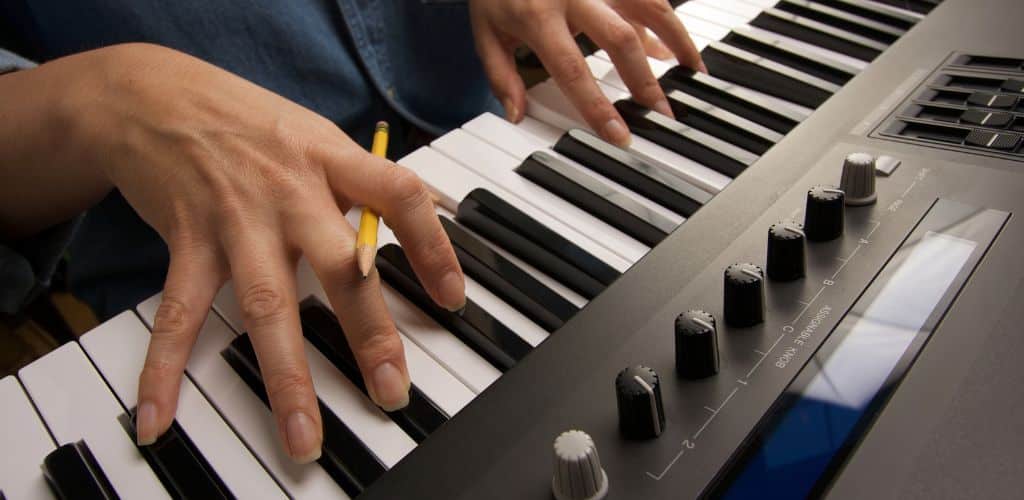
I’ve noticed that a relaxed hand position is essential for effective piano playing. My wrists stay supple, my fingers curved, and my thumbs remain straight, allowing me to engage with the keys confidently.
Careful finger placement on the keys is necessary; I ensure that my fingertips, not the pads, make contact. This precise engagement allows for better control and a cleaner sound when playing.
Basic Fingering Rules and Tips

I adhere to a few fundamental rules when assigning fingers to piano keys.
One core principle is to always start with the thumb (finger 1) and then use fingers 2 through 5—index to pinky—in a sequence that prevents awkward hand movements.
Regular practice with scales and arpeggios helps me internalize these fingering patterns, which I can apply to more complex pieces.
Consistency in fingering across various pieces allows my muscle memory to develop, making my technique more stable and my playing appear effortless.
Applying Fingering Techniques to Scales

Scales are the building blocks of piano music, and proper fingering is critical for playing scales smoothly.
It’s like having a reliable map for your fingers to follow, allowing you to navigate the keyboard with confidence and precision.
Major Scales and Their Fingerings
When I talk about major scales, I’m referring to a series of notes with a specific pattern of whole and half steps. Engaging with major scales on the piano chords typically involves a typical fingering pattern that helps me maintain fluidity and speed.
- C Major (1 octave): RH: 1-2-3-1-2-3-4-5 / LH: 5-4-3-2-1-3-2-1
- G Major (1 octave): RH: 1-2-3-1-2-3-4-5 / LH: 5-4-3-2-1-3-2-1
- D Major (1 octave): RH: 1-2-3-1-2-3-4-5 / LH: 5-4-3-2-1-3-2-1
As I ventured through the keyboard, other major scales like E, A, B, and F major all followed similar fingering patterns but differed in their starting positions and the usage of black keys.
Minor Scales and Their Fingerings
Diving into minor scales, we encounter three types: natural minor, harmonic minor, and melodic minor. Each type brings its flavor and emotional depth to the music.
The natural minor scale is the simplest, as it uses the same key signature as its relative major.
A Natural Minor (1 octave): RH: 1-2-3-1-2-3-4-5 / LH: 5-4-3-2-1-3-2-1
The harmonic minor scale creates a distinctive sound with a raised seventh note. In contrast, the melodic minor scale raises the sixth and seventh notes when ascending and follows the natural minor pattern when descending.
A Harmonic Minor (1 octave): RH: 1-2-3-1-2-3-4-5 / LH: 5-4-3-2-1-3-2-1
- A Melodic Minor (ascending, 1 octave): RH: 1-2-3-1-2-3-4-5 / LH: 5-4-3-2-1-3-2-1
- A Melodic Minor (descending, 1 octave): RH: 5-4-3-2-1-3-2-1 / LH: 1-2-3-1-2-3-4-5
Whether I’m mastering one octave or ambitiously pursuing two octaves, sticking to these fingering charts ensures I can focus on expression rather than worrying about which finger goes where.
Keeping a few fingering charts downloaded or memorized is handy for quick reference. Right off I go – a keyboard is calling my name, and scales won’t practice themselves.
Top Piano Brand Guide
DP-12 Compact Digital Piano by Gear4music
The DP-12 Compact Digital Piano by Gear4music is a user-friendly interface and compact-size digital piano, ideal for smaller living spaces or practice areas.
Its affordable price point and essential features also provide beginners with a solid foundation for learning and practicing the piano.
DP-12 Compact Digital
Piano by Gear4music
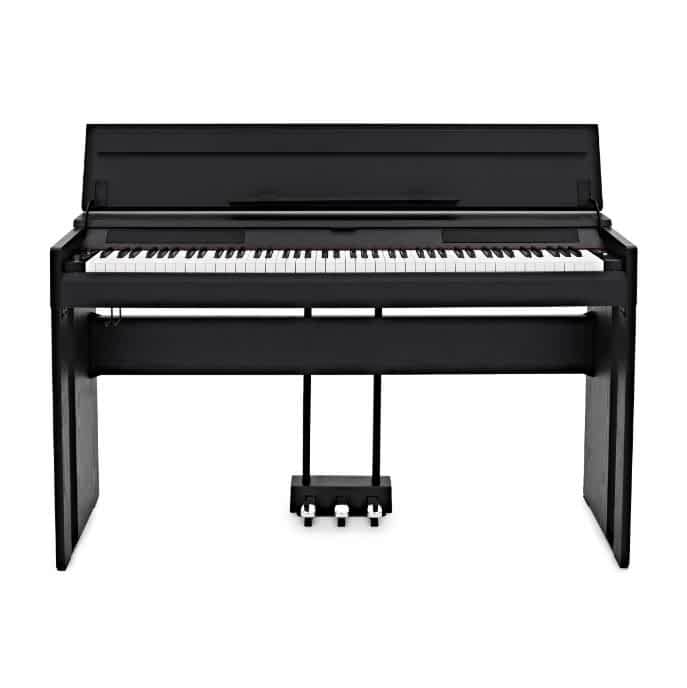
PERFECT FOR: Learning at home
FEATURES: 88-key digital piano ideal for living spaces
OTHER INFO: Synthetic ebony and ivory keys provide that premium grand feel
DP-12 Compact Digital
Piano by Gear4music
- Play with expression with a three-pedal unit and 128-note polyphony
- Get creative with 32 voices and a two-track playback recording
- With a sleek and stylish appearance
- No Bluetooth available
When you click ‘Check Price’, you’ll see there are loads of great places to buy this item. Our personal favorite is Sweetwater for the US, and Thomann and Gear4Music for the UK & Europe.
They are the largest music retailers, with excellent customer service, competitive prices, really fast shipping, and the longest guarantees.
The professional musician who wrote this article combined many things,
from the product build, manufacturer’s reputation through to feedback
from other users, to create our famous TedScore™.
Kawai CN21 Digital Piano

The Kawai CN21 Digital Piano is highly regarded for its authentic piano sound and responsive key action, providing players with a realistic playing experience.
Its wide range of advanced features, including versatile sound options and recording capabilities, make it a top choice for musicians seeking a professional digital piano.
Kawai CN21 Digital Piano
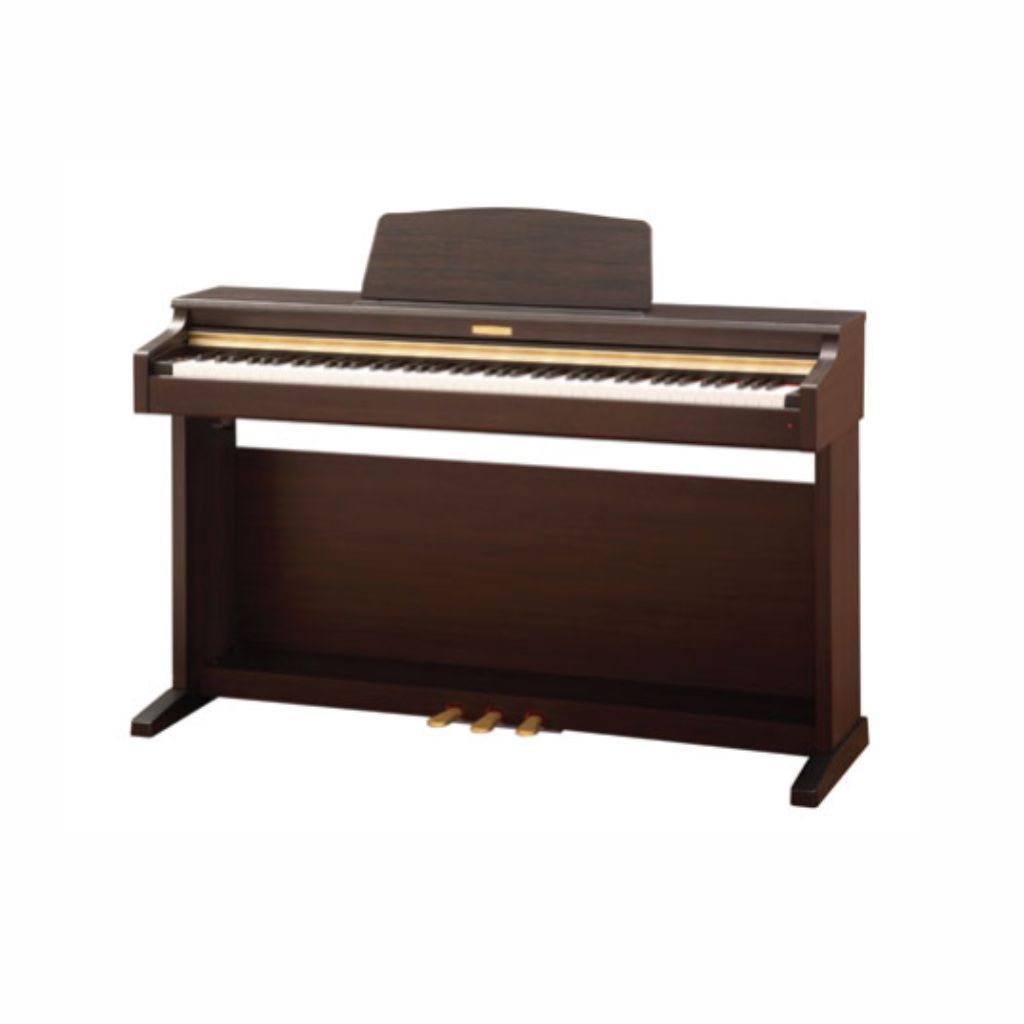
FEATURES: OLED Display That Makes Navigation Easy
OTHER INFO: Spatial Headphone Sound Technology Enhances The Depth And Realism Of The Sound
- Includes Kawai's lesson function to learn classic piano pieces
- Adjust the instrument's parameters with the Virtual Technician app
- Creates rich and expressive sounds like the SK-EX and EX concert grand pianos
- With Superior Headphone Sound technology to enhance playing experience
- Advanced mode requires an iPad to access
When you click ‘Check Price’, you’ll see there are loads of great places to buy this item. Our personal favorite is Sweetwater for the US, and Thomann and Gear4Music for the UK & Europe.
They are the largest music retailers, with excellent customer service, competitive prices, really fast shipping, and the longest guarantees.
The professional musician who wrote this article combined many things,
from the product build, manufacturer’s reputation through to feedback
from other users, to create our famous TedScore™.
Yamaha C3X PE Grand Piano
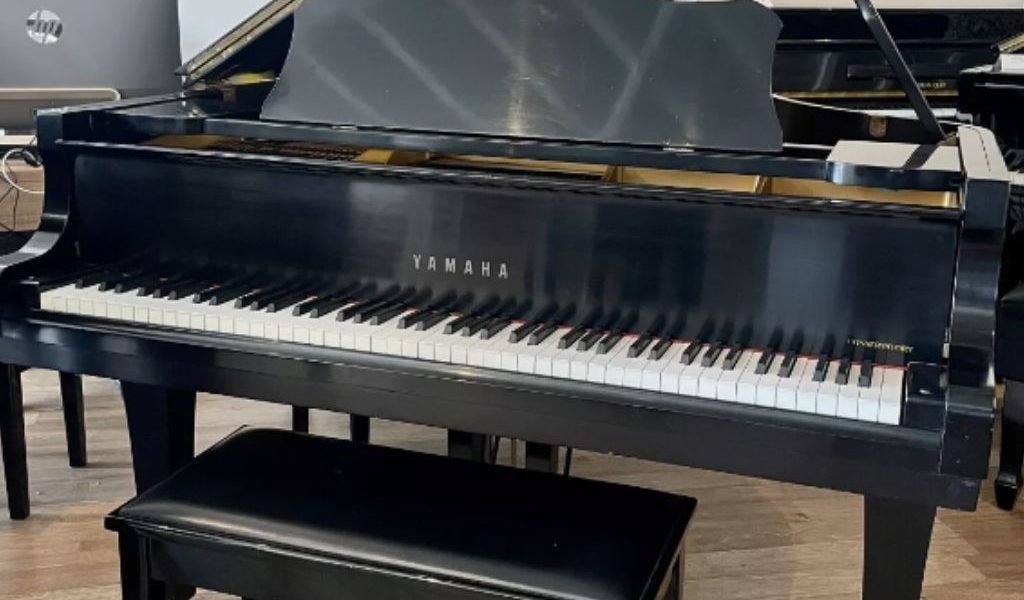
The Yamaha C3X PE Digital Grand Piano is considered top-tier due to its exceptional sound quality, realistic key action, and advanced features, making it a preferred choice for professional pianists and discerning musicians.
Its innovative technology and expressive capabilities set it apart as a top-tier digital piano.
Yamaha C3X PE Grand Piano
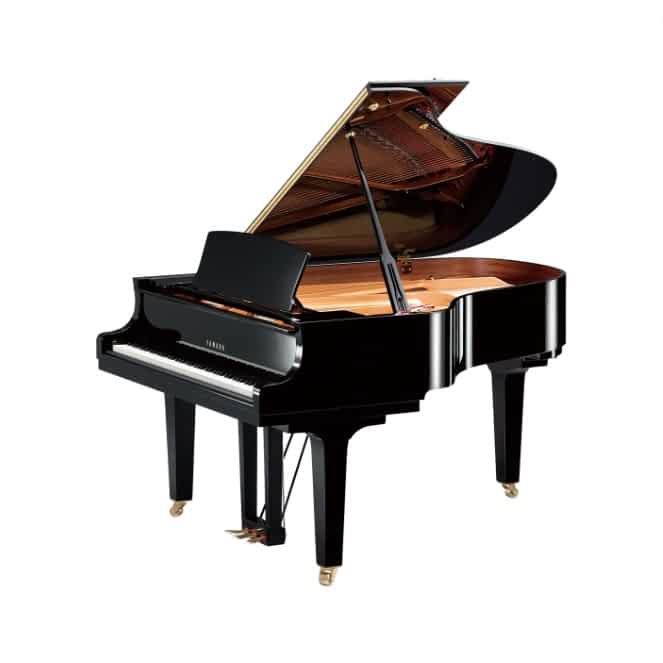
PERFECT FOR: use at home or in small performance spaces
FEATURES: Utilises 3 pedals for full sostenuto
OTHER INFO: Made from high-quality materials
Yamaha C3X PE Grand Piano
- With a length of 186 cm
- Produces beautiful, rich tones
- Available in a range of letters and models (G3, C3, C3X)
- An amazing sound that will make any pianist happy
- A piano that will last a lifetime
- Expensive piano - one of Yamaha's top-tier pianos
When you click ‘Check Price’, you’ll see there are loads of great places to buy this item. Our personal favorite is Sweetwater for the US, and Thomann and Gear4Music for the UK & Europe.
They are the largest music retailers, with excellent customer service, competitive prices, really fast shipping, and the longest guarantees.
The professional musician who wrote this article combined many things,
from the product build, manufacturer’s reputation through to feedback
from other users, to create our famous TedScore™.
Piano Fingering Chart:
Important Insights
Piano fingering chart is your trusty companion, helping to anchor the numbers to your digits, especially when you’re just starting. They’re like the constellations guiding sailors; each finger number points your way through the melodic sea.
And the scales—I can’t emphasize enough—will soon become your best mates, introducing your hands to the piano’s geography.

As I’ve mentioned, don’t be bold about making the odd mistake. It’s all part of the learning rhapsody. With every slip and slide, my accuracy has only sharpened.
Stick with it; the day will come when your fingers nimbly command the ivories without a second thought.
Wait! Check this out…
Explore the top piano brands and their rankings in this comprehensive article.
FAQ's
Finger placement is crucial when you play piano as it directly impacts technique, speed, accuracy, and overall performance. Using the correct fingerings can make it easier to play complex passages and maintain fluidity in your playing.
The finger pattern for all the scales on the piano typically follows a specific sequence for each hand. For the right hand, the pattern is generally 1, 2, 3, 1, 2, 3, 4, 5 (thumb, index, middle, thumb, index, middle, ring, pinky). For the left hand, it is usually 5, 4, 3, 2, 1, 3, 2, 1 (pinky, ring, middle, index, thumb, middle, index, thumb). These fingerings may vary slightly depending on the specific scale and the musical context.



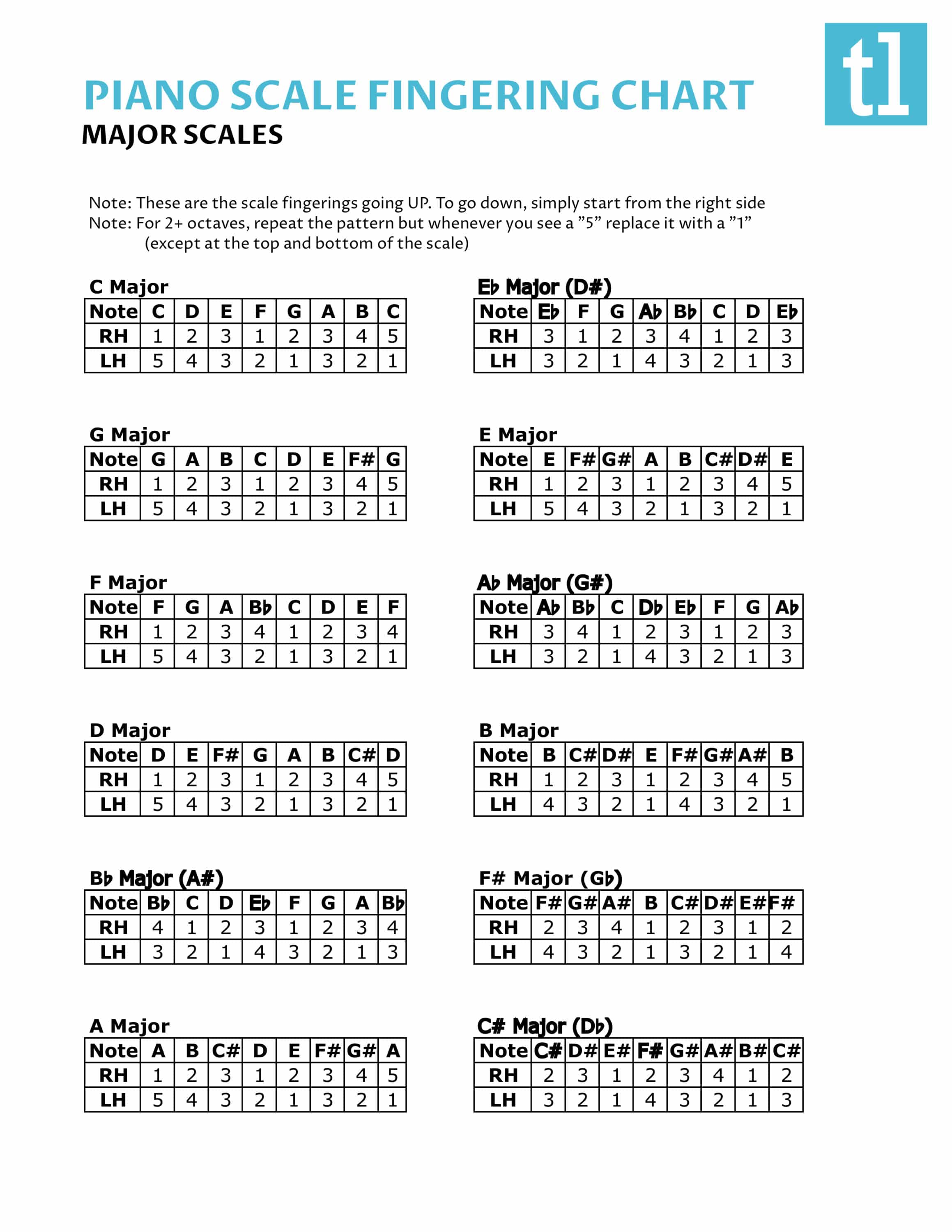
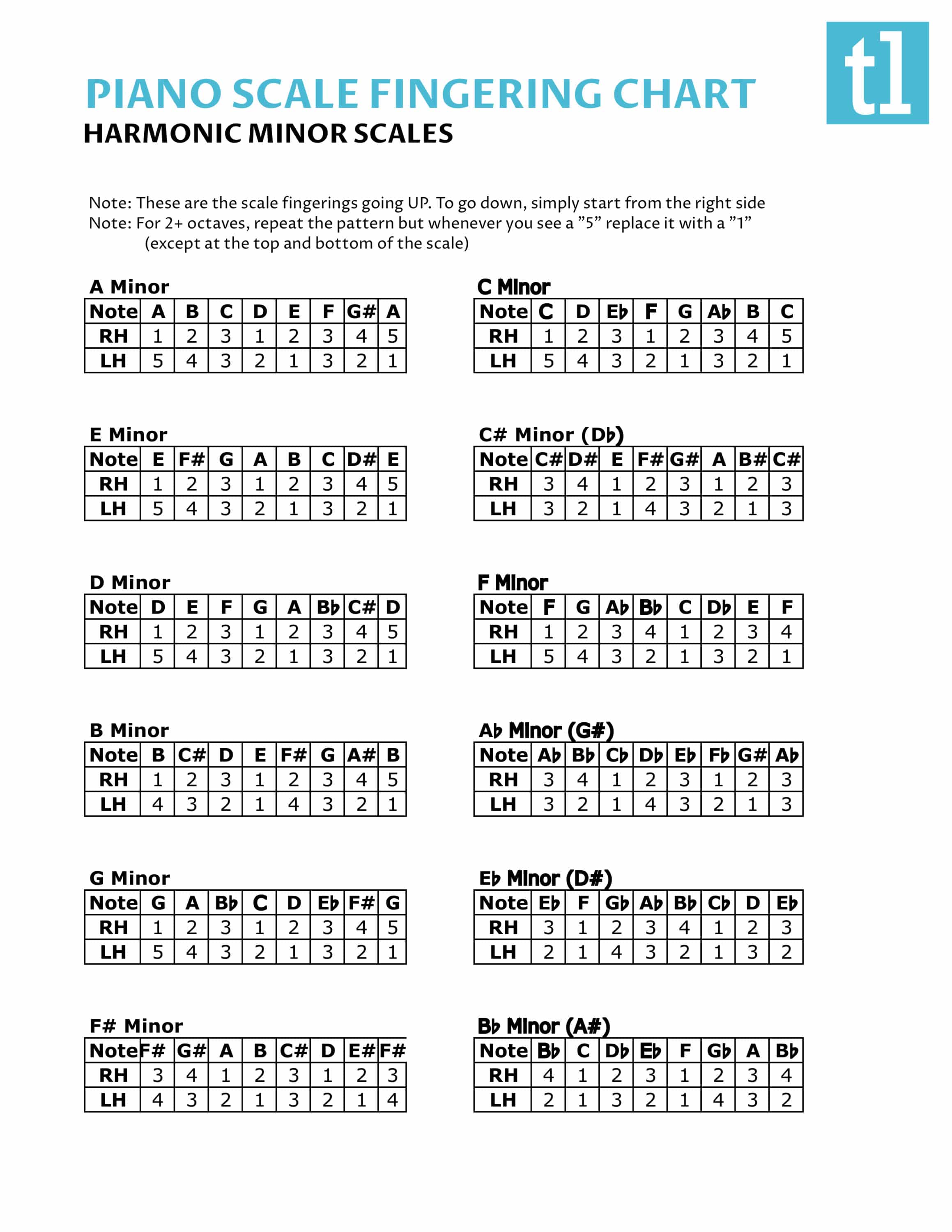







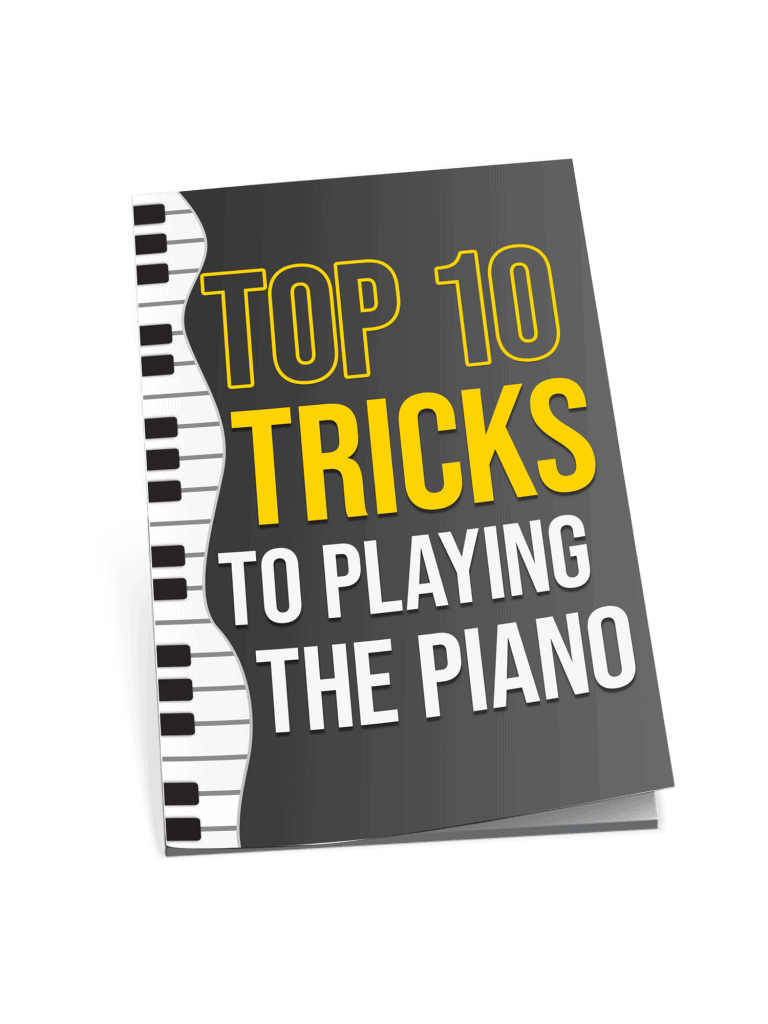
Not sure I agree with all the fingering techniques listed. Some modern methods suggest more adaptable approaches depending on hand size and personal comfort. What’s your take on this, Robert Emery? There seems to be a variety of opinions out there.
I’ve been struggling with minor scales and this breakdown was super helpful, cheers!
Thanks, KeysMaster! It’s been a challenge but I’m getting there.
Right? Minor scales can be tricky but so rewarding. Happy practicing!
Good list on the piano brands, but kinda surprised you didn’t include Steinway. Any reasons? They’re iconic.
Robert Emery, can you suggest how to make practicing scales more engaging for young beginners? Struggling to keep my kids interested.